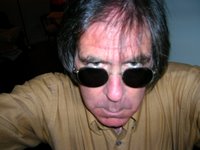 How a person chooses to celebrate his or her birthday is often a matter of very personal choice. Pompey the Great chose to celebrate his 45th birthday, on the 29th in 61 b.c.e., by ending the Mithridatic Wars with a stunning victory over the nation-state of Pontus. Apparently, there were more than a few people who did not think that Pompey was all that great because on his 58th birthday in 48 b.c.e., he was assassinated when he landed in Egypt
How a person chooses to celebrate his or her birthday is often a matter of very personal choice. Pompey the Great chose to celebrate his 45th birthday, on the 29th in 61 b.c.e., by ending the Mithridatic Wars with a stunning victory over the nation-state of Pontus. Apparently, there were more than a few people who did not think that Pompey was all that great because on his 58th birthday in 48 b.c.e., he was assassinated when he landed in Egypt
Pompey had the same problem with women that England’s Henry VIII did – there were a lot of them. In sequential order, they were Antistia, Aemilia Scaura, Mucia Tertia, Julia (I have no idea where Julia came from, but it seems to me that her name is just a tad out of place), and Cornelia Metella.
 Ventriloquist Edgar Bergen died on the 30th in 1978. Together with his partner Charlie McCarthy, Bergen achieved great success as an entertainer. While he briefly attended Northwestern University, he never graduated. When he finally became successful, Northwestern at last gave Bergen the honorary degree of Master of Innuendo and Snappy Comeback. Which only goes to prove that sometimes being a wise ass pays off. In 1955, Edgar was the Grand Marshal of the Annual Great Oregon Steam-Up in Brooks, Oregon. A yearly show which features steam traction engines
Ventriloquist Edgar Bergen died on the 30th in 1978. Together with his partner Charlie McCarthy, Bergen achieved great success as an entertainer. While he briefly attended Northwestern University, he never graduated. When he finally became successful, Northwestern at last gave Bergen the honorary degree of Master of Innuendo and Snappy Comeback. Which only goes to prove that sometimes being a wise ass pays off. In 1955, Edgar was the Grand Marshal of the Annual Great Oregon Steam-Up in Brooks, Oregon. A yearly show which features steam traction engines







